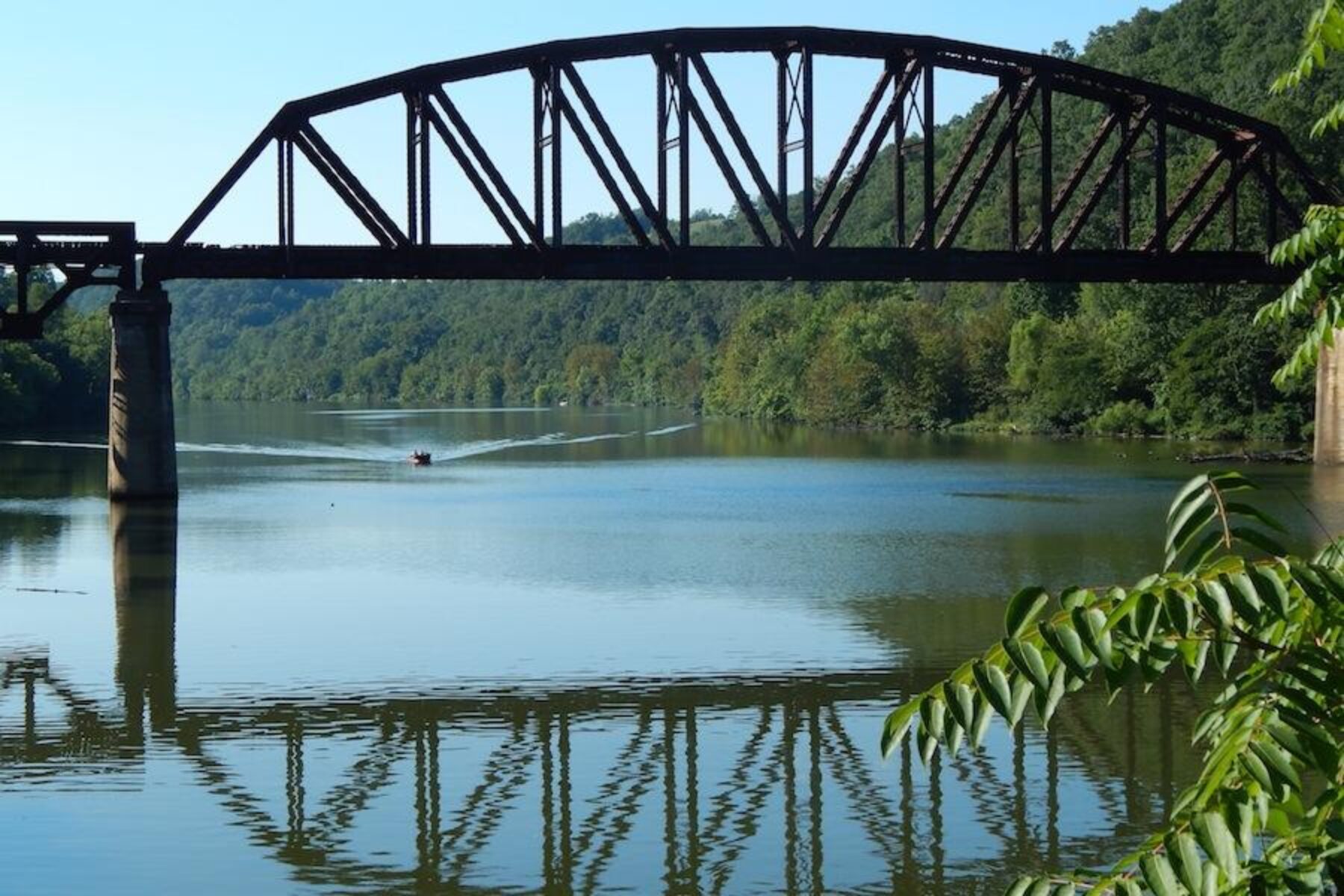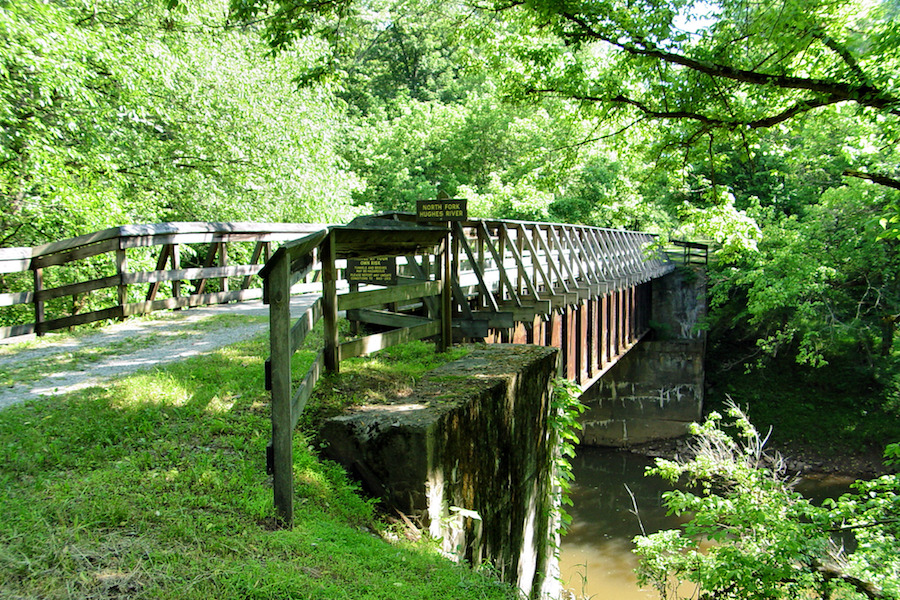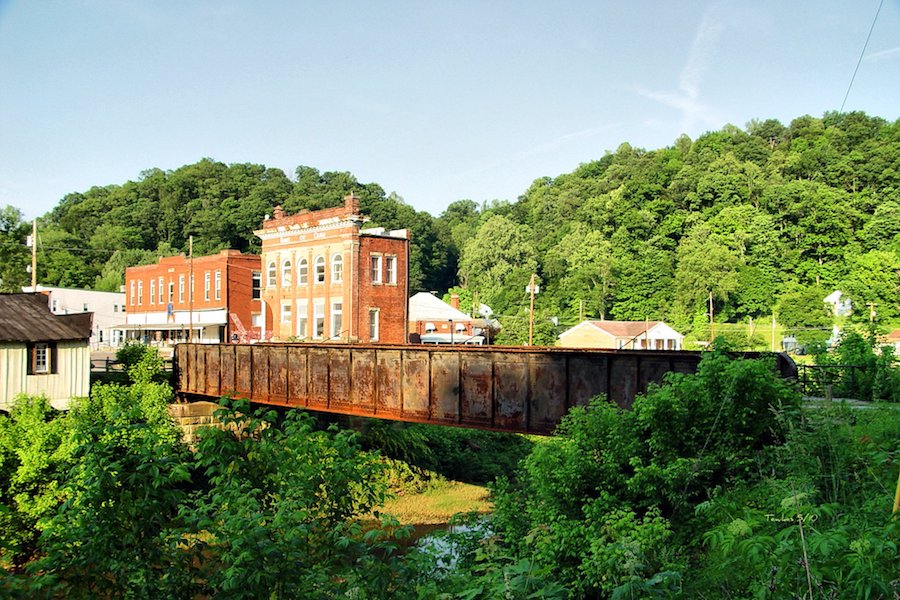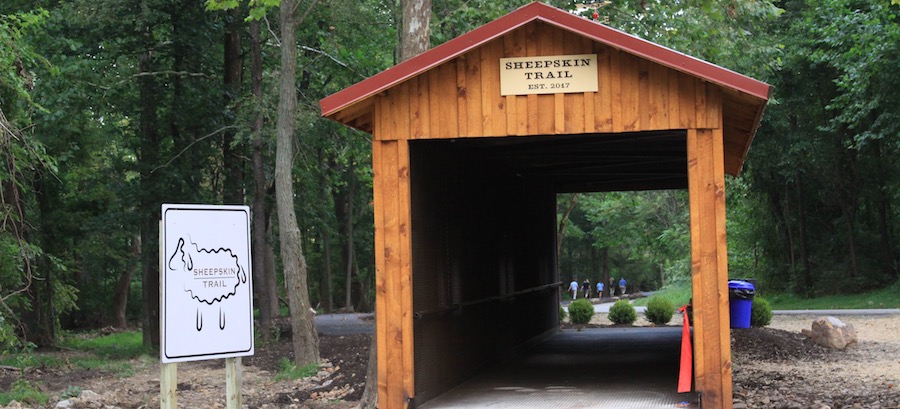The P2P: World-Class Trail Network to Kick-Start Bike Tourism Boom in West Virginia and Pennsylvania

It was a cold and rainy morning that day in north central West Virginia, but inside the mood was exuberant, the crowd full of optimism, excitement.
Last month’s unveiling of Rails-to-Trails Conservancy’s (RTC’s) feasibility study on completing the West Virginia section of the 238-mile Parkersburg to Pittsburgh rail-trail (the “P2P”) was certainly not the beginning of anything.
Local advocates, trail builders and community groups have been completing sections of rail-trail along this corridor since the 1980s, and they are today some of the most well known and loved rail-trails in West Virginia, such as the North Bend Rail Trail, the West Fork River Trail and the Mon River Trail.
But the morning of the unveiling certainly had a feeling of occasion about it, with all the attendees feeling as if we were present for an event that would one day be remembered as a moment of significance, a juncture.
Though we took some time to look back and reflect on the remarkable people and successes that mark the story of rail-trail building in this area in decades past, our primary goal was to imagine a future yet unwritten. We were there to inspire and galvanize trail champions and local and state leaders toward the ambitious objective of completing the West Virginia sections of the P2P within the coming decade.
Unifying the Route

The P2P corridor heads east out of the Ohio River port city of Parkersburg, along the North Bend Rail Trail, through small, rural communities like Cairo, West Union and Salem. At Clarksburg it turns northeast, following the Harrison North Rail-Trail, Marion County Trail and Mon River Trail through Shinnston, Fairmont and Morgantown, and to the Pennsylvania border at Point Marion.
Seventy-eight percent of the 150-mile West Virginia section is already complete, with a few key gaps in Wood, Harrison and Marion counties. And in the past 18 months, local municipalities and trail groups have entered into negotiations to acquire several of those remaining parcels of land. Gatherings like the one held last month are building support for continued commitments from municipal officials and leaders in the state legislature.
Amplifying the Impact of Local Trails

Completing the West Virginia portion of the P2P would create a 150-mile rail-trail that would be one of the longest in the United States. But connecting that rail-trail in West Virginia with the world-renowned Great Allegheny Passage (GAP) in southwest Pennsylvania would open the door to a recreation and tourism economy worth tens of millions of dollars a year.
For West Virginia, the stakes could not be higher.
In communities buffeted by significant changes of traditionally dominant industries, trail tourism offers real economic hope. And so the race to connect the P2P is about more than just trail miles, but about creating new opportunities for these communities—where opportunities of any kind have long been in short supply.
Linking to the GAP would bring into West Virginia some of the 800,000 hikers and bikers that visit that destination trail each year, along with a share of the more than $40 million they spend annually in communities along the trail.
There is no doubt that a growing body of planners, municipal officials and state and local reps now fully appreciate that West Virginia is just a few short steps away from its own world-class rail-trail that would have a similarly transformative impact on local communities in their state.
A number of West Virginia state legislators have already committed to exploring the creation of a legislative trails caucus, modeled on the successful initiative in Ohio, that would seek trail funding opportunities and promote the development of trails and trail tourism in the state.
But, while the groundswell of support in West Virginia continues to build behind the completion of the P2P, the key piece of the puzzle may, in fact, be in someone else’s hands.
From Vision to Reality

It is across the border in Pennsylvania where the largest gap in the P2P remains.
The largely undeveloped Sheepskin Trail corridor from Point Marion, Pennsylvania, through Uniontown and on to the GAP at Connellsville, looms as being the final hurdle for completion of the fully connected 238-mile trail from Parkersburg to Pittsburgh, a critical piece if West Virginia is to tap into the booming trail traffic along the GAP.
And the connections don’t end there. The P2P is part of an even larger, 1,500-miles-plus planned trail network spanning 51 counties across West Virginia, Pennsylvania, Ohio and New York, supported by the Industrial Heartland Trails Coalition.
It takes bravery, and vision, to work toward something you can’t already see. We know now that our trail-building partners in West Virginia have plenty of both.
What they need now is the commitment and support of their state legislators and business leaders, and a continuation of the determined local grassroots trail-building movement that has brought them so far, and now so close.
Learn more about the P2P and download the corridor study on RTC’s P2P web page.

Donate
Everyone deserves access to safe ways to walk, bike, and be active outdoors.

